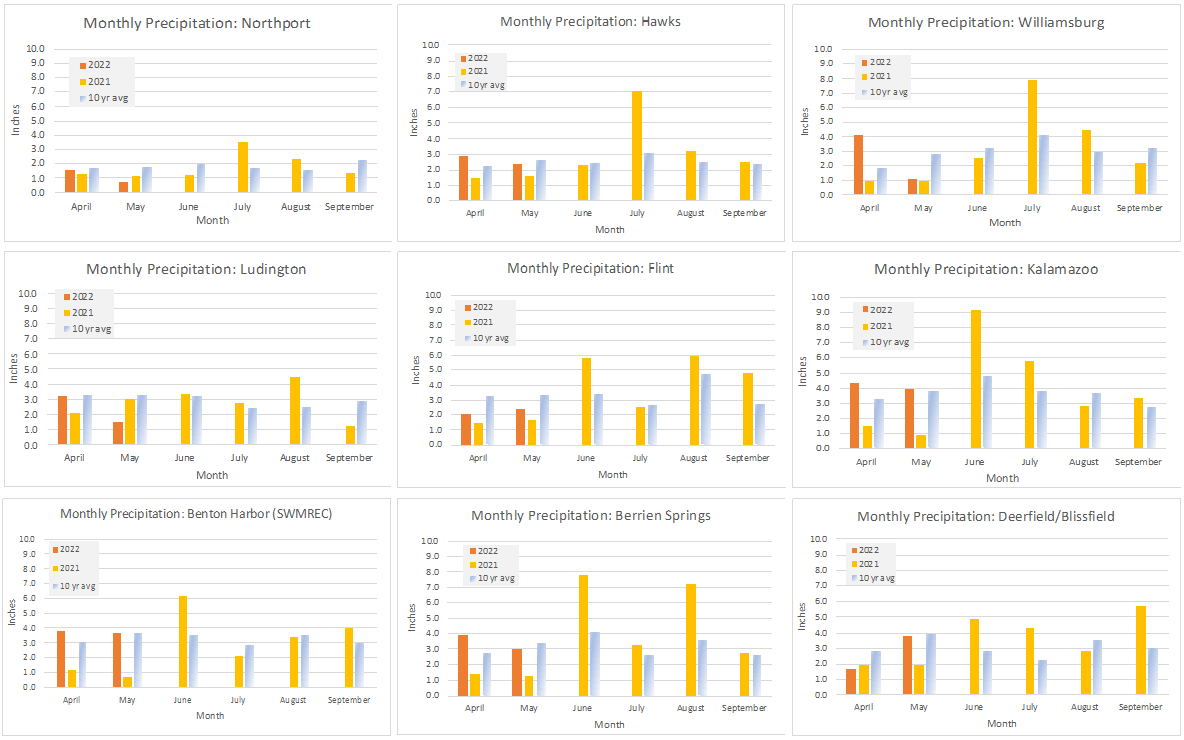Michigan chestnut crop report for the week of June 22, 2022
Pollen shed is underway in much of the state.

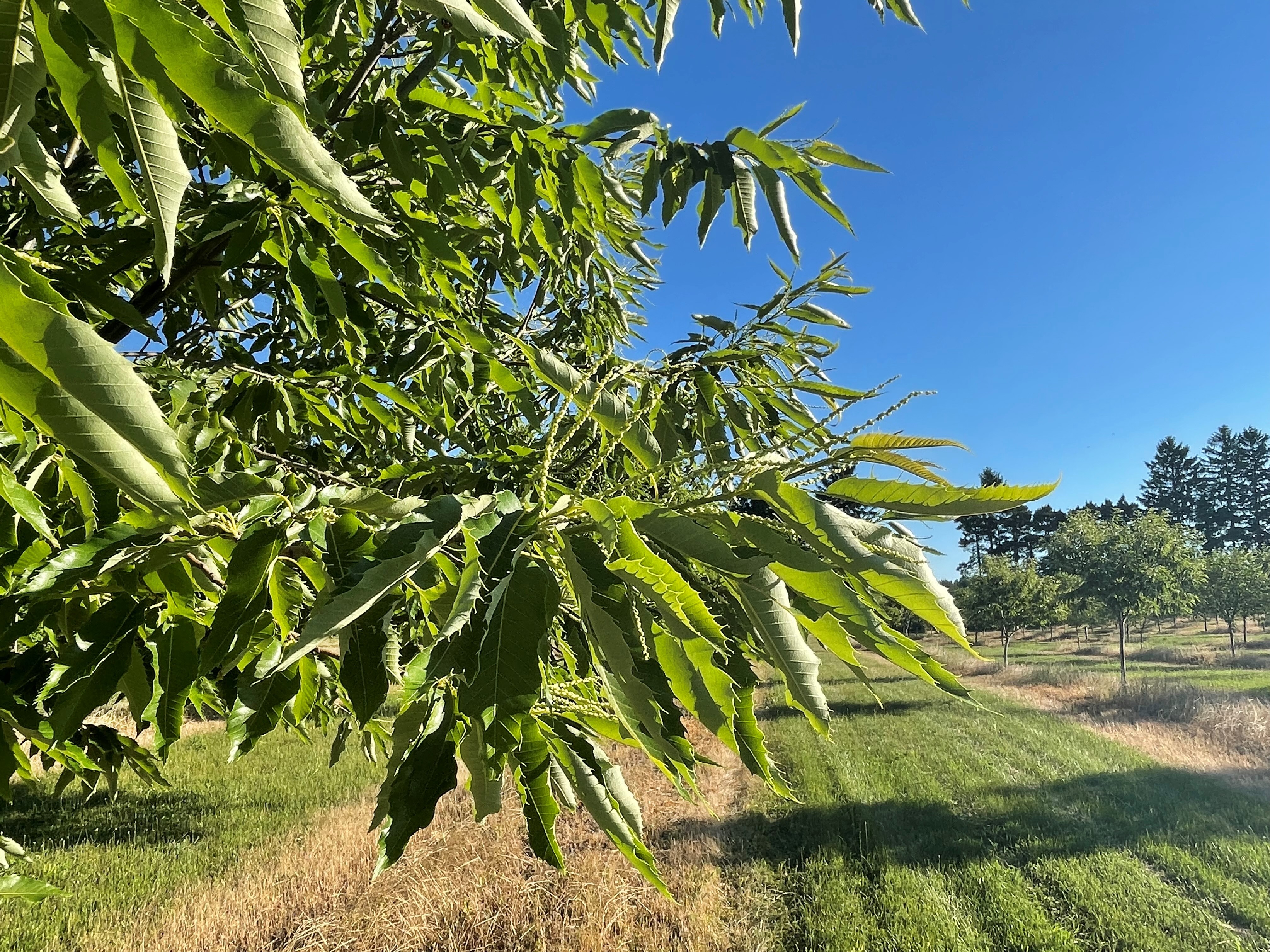
Weekly weather review
June 21, 2022, the sun reached the Tropic of Cancer, and the longest day of the year in the northern hemisphere. There were heat advisories across Michigan with the potential for record setting temperatures, flash floods in New Mexico, and frost warnings in northern Maine. This trend continues an interesting year of extremes.
This past week we experienced warm temperatures across the state and variable rainfall. Apart from certain areas of the upper peninsula, temperatures over the last week were above average, especially in southwest Michigan (see average temperature graphic).
Some locations, especially north central and northeast Michigan saw over 2 inches of rain over the last few days. Most areas received 0.5-1 inch of precipitation (see accumulated precipitation graphic and monthly precipitation by region).
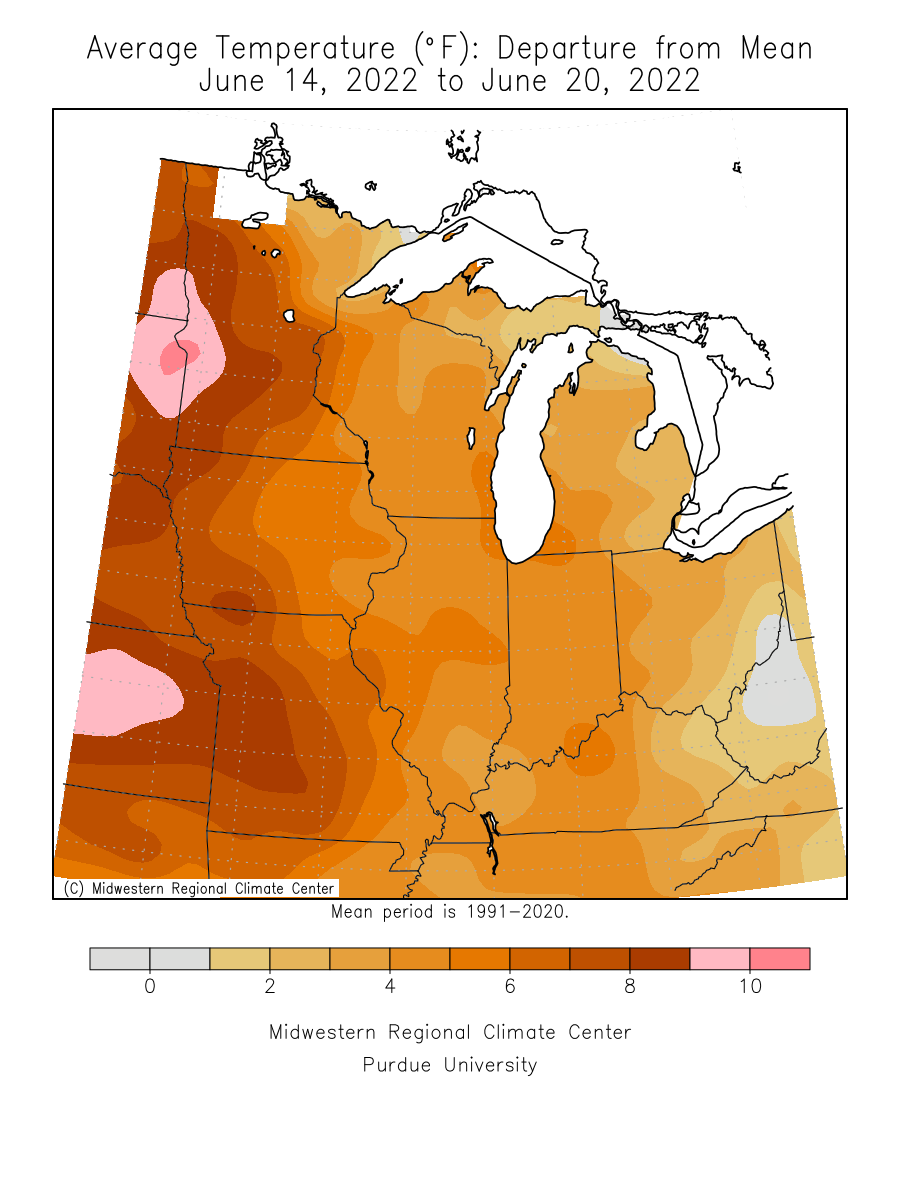
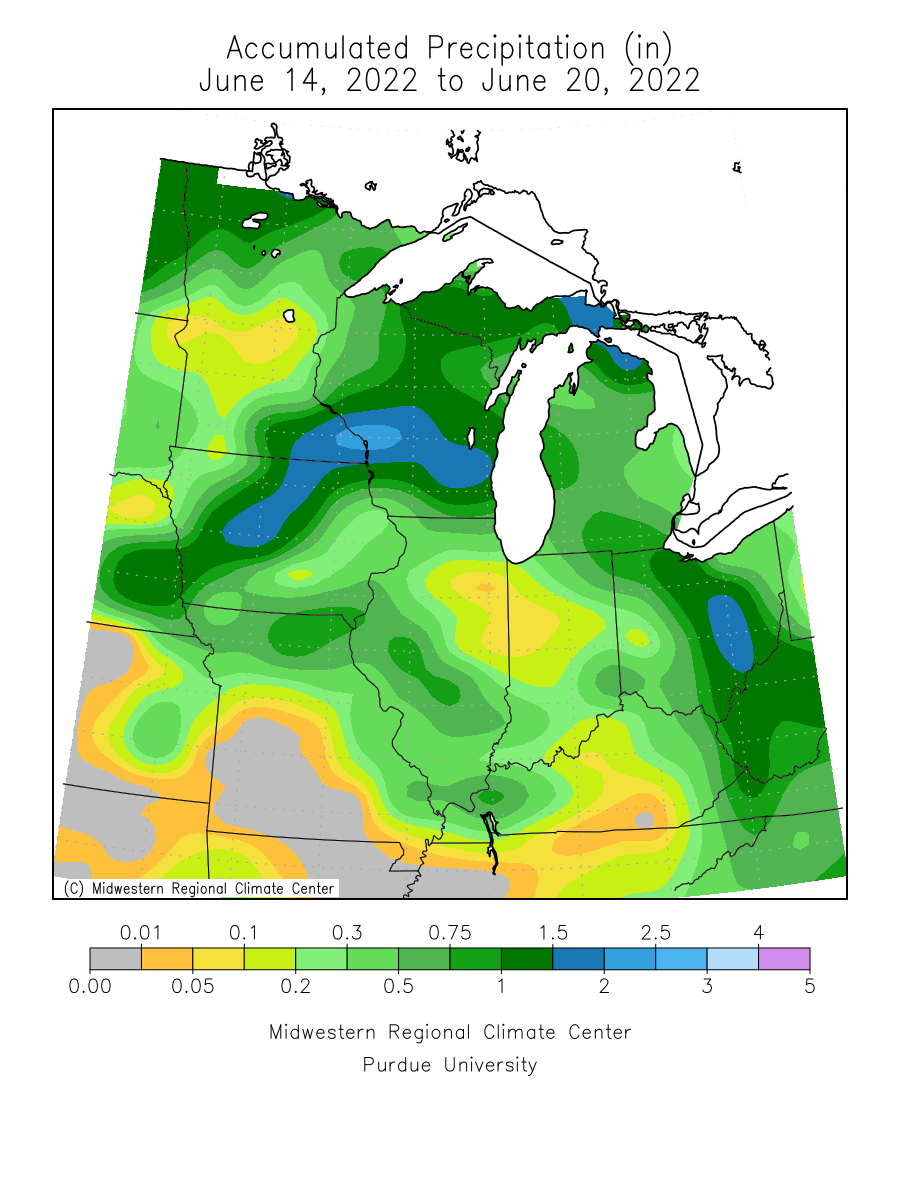
While precipitation was average to above average this spring, increasing evapotranspiration across the state has resulted in declining in soil moisture levels over the last couple of months (See current soil moisture graphic). Growers should be carefully monitoring soil moisture and providing adequate irrigation as needed.

Looking ahead
It will be mostly sunny and slightly cooler, before warming up June 24 and 25. There is a chance of precipitation this weekend, but since there is not much moisture to work with, there is only a possible chance of scattered showers. Next week will be mostly dry and warm with high, above normal water demand. Late next week temperatures should be more seasonable and perhaps even cooler than normal. The NOAA 6-10 day outlook predicts near normal temperatures and precipitation for most of the lower peninsula through July 2.
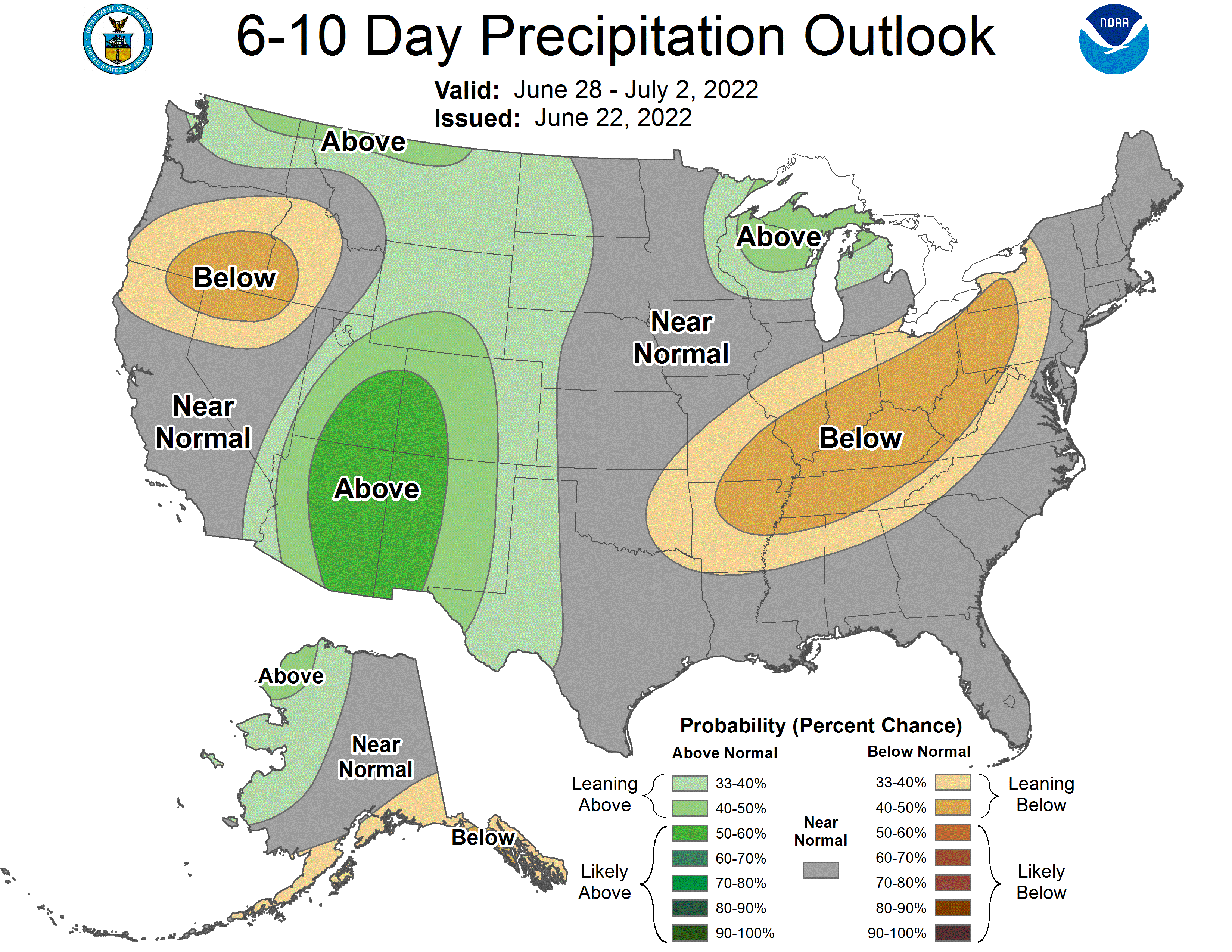
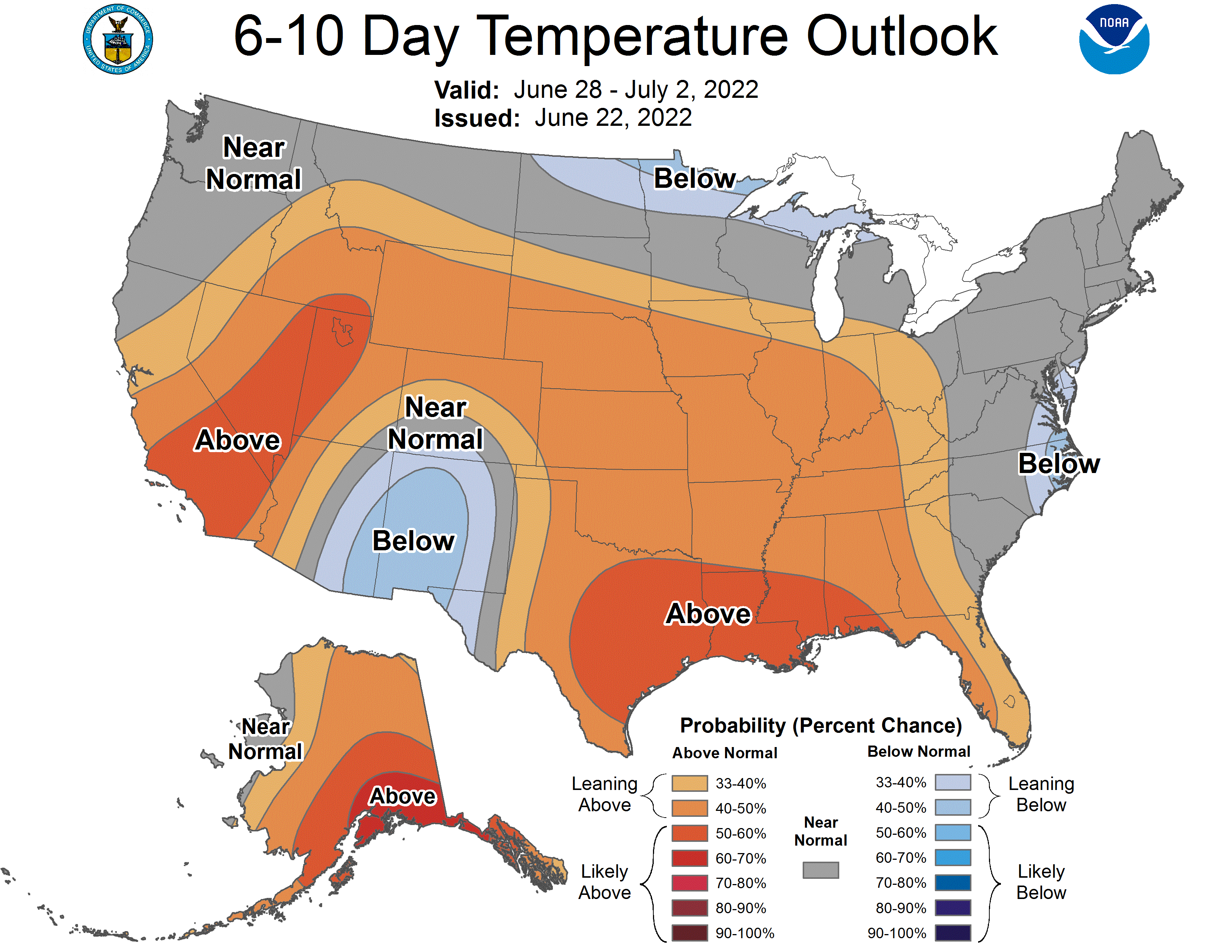
View the most recent MSU agriculture weather forecast.
Management activities
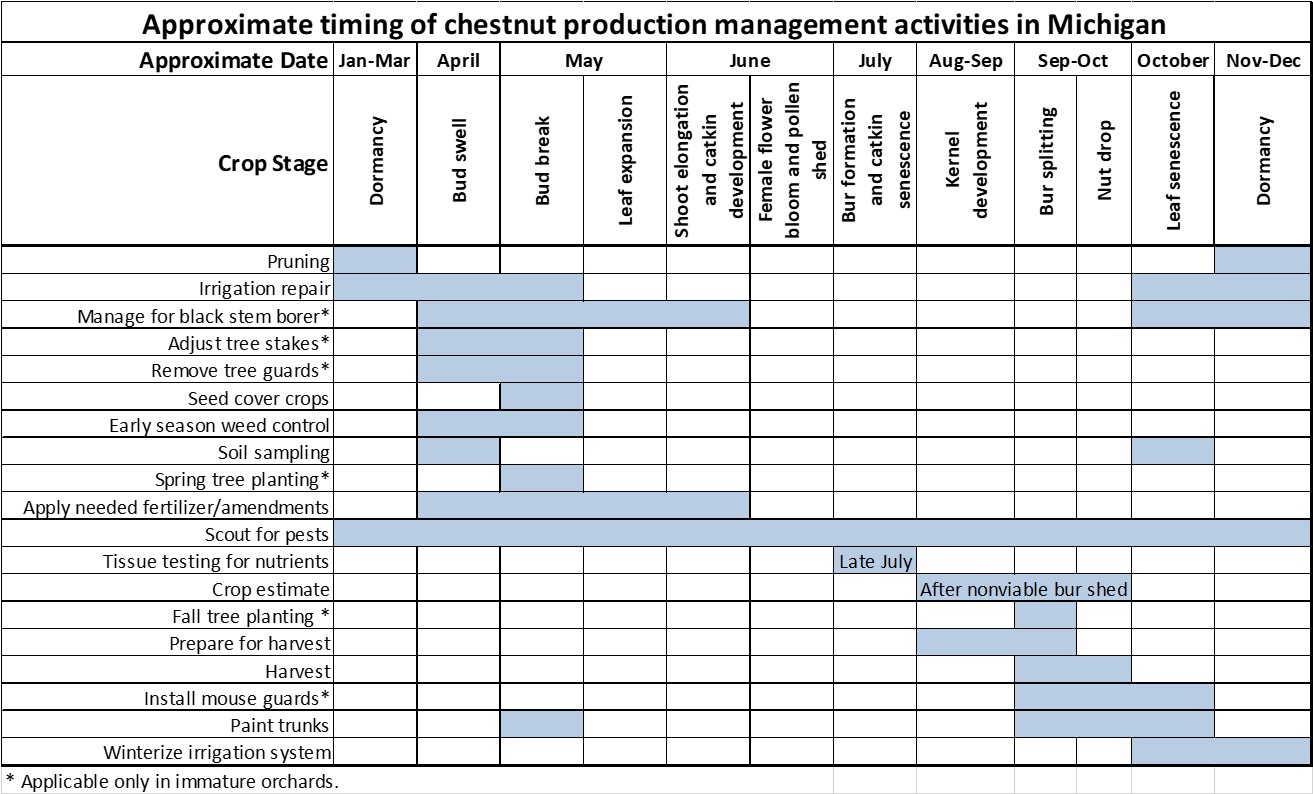
Fertility
In recent years, some growers have also been utilizing tissue nutrient testing as another data point for making nutrient adjustments. Sampling chestnut leaf tissue for analysis is similar to protocol in other crops, with a few important caveats.
- Collect samples from this year’s new growth before vegetative terminal growth stops for the year. Terminal growth typically stops in early August as the trees start developing burs.
- Collect five to 10 leaves per tree from multiple terminal branches. Sample along the length of the new growth.
- Carefully read the protocol from the testing facility you plan to utilize to ensure you receive a valid report.
There are many labs that provide leaf analysis testing, a few are listed here for your convenience:
- MSU Soil and Plant Nutrient Lab, A84 PSSB, East Lansing, MI 48824 (phone: 517-355-0218)
- A & L Great Lakes Laboratories in Fort Wayne, Indiana (phone: 260-483-4759)
- Brookside Labs in New Knoxville, Ohio (phone: 419-753-2448,)
For more information on the general protocol for nutrient sampling, refer to the MSU Extension article, “Time to collect leaf samples for nutrient analysis.”

Insects
Asian chestnut gall wasp adult emergence will begin in infested sites soon. Asian chestnut gall wasp (Dryokosmus kuriphilus Yasumatsu) was discovered in Michigan in 2015. This tiny insect, a native of China, is a major invasive pest of chestnut trees in Japan, Korea, much of Europe, and the United States. At high densities, the spherical galls caused by the ACGW can reduce tree growth and nut production. This invasive pest will continue to spread and could become a serious problem for commercial chestnut producers across the state. Growers in or adjacent to the infested region (See map) can hang yellow sticky traps to catch adults and scout for galls season long. Refer to the MSUE Bulletin E3457, Asian Chestnut Gall Wasp, for more information on biology, identification and management.
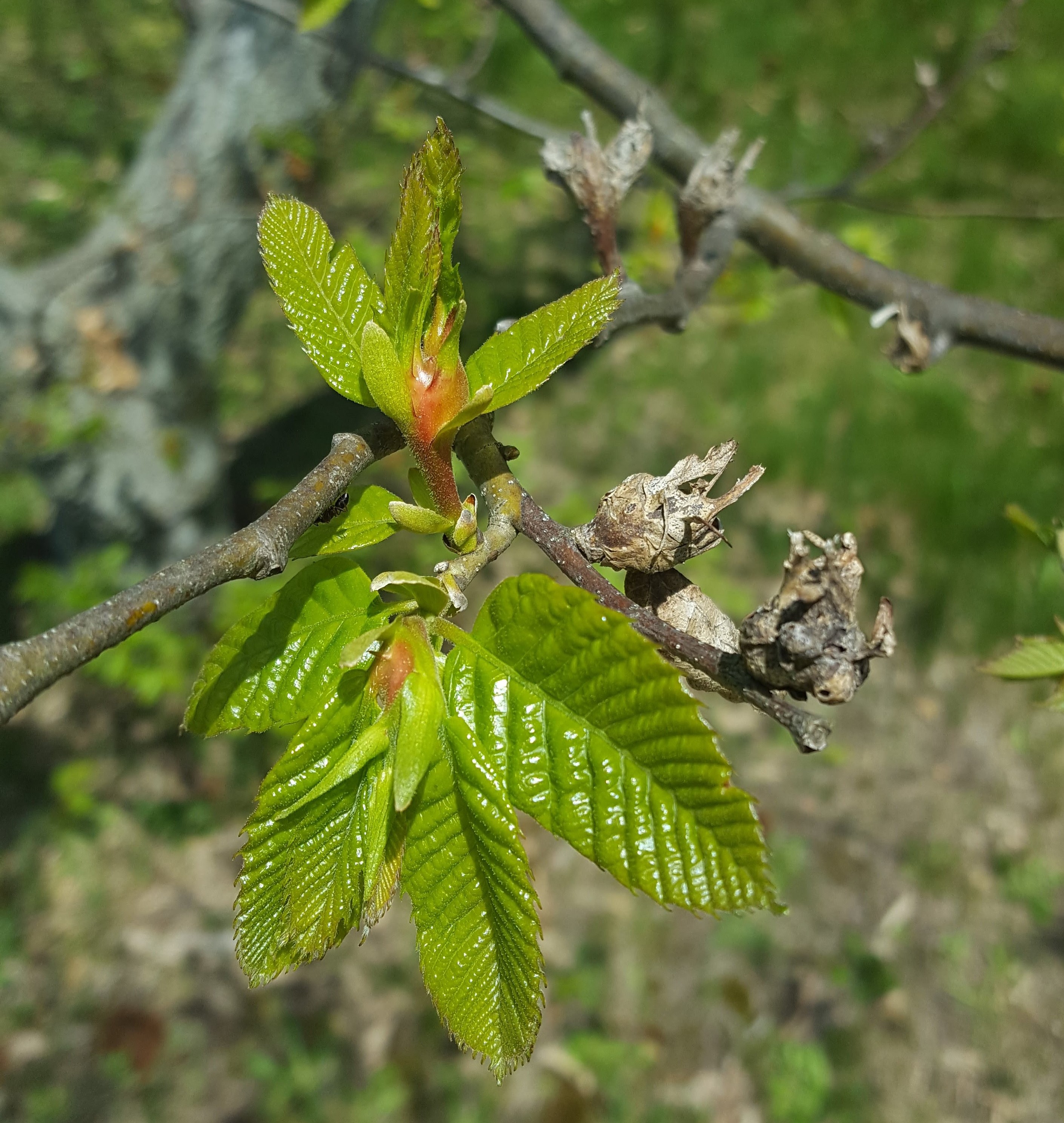
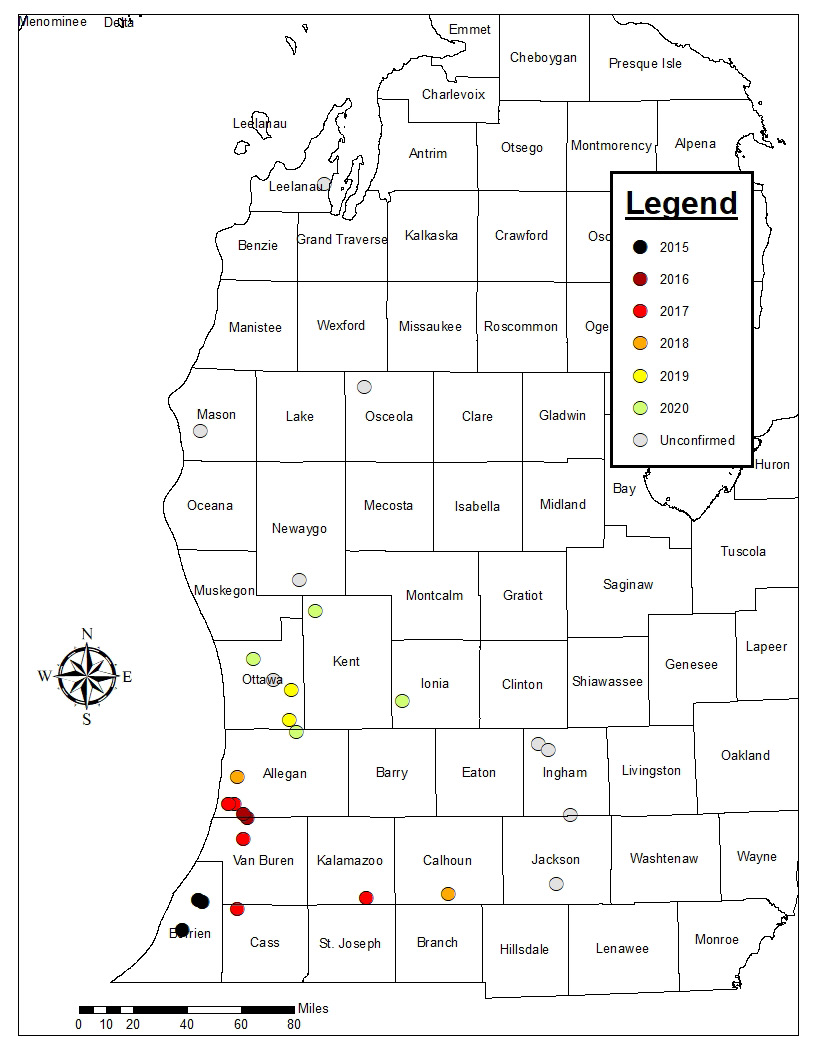
As conditions move towards warmer and drier conditions, mite levels are expected to rise. Chestnut trees are susceptible to feeding damage from a number of spider mite species including European red mite and two-spotted spider mites. Affected leaves appear mottled, stippled, or bronzed and become brittle leading to early defoliation and reduced photosynthetic activity. Reduced photosynthesis can lead to reduced nut size and return crop load in subsequent years as well as increased sensitivity to winter injury. At this time no treatment thresholds are established for mites in chestnut, but evidence from crops like cherry indicate that some level of feeding is likely tolerable and that higher populations can be tolerated as the season progresses through summer. European red mite appears to be the more prevalent mite species for chestnut producers, but growers should keep an eye out for two-spotted spider mites as well.
European red mites (ERM) overwinter as eggs in bark crevices and bud scales and are the most commonly observed species in Michigan chestnut orchards. Eggs are small spheres, about the size of the head of a pin with a single stipe or hair that protrudes from the top (this is not always visible). Eggs can be viewed with a hand lens or the naked eye once you have established what you are looking for. Growers can scout for overwintering eggs and early nymph activity in the spring to assess population levels in the coming season. As temperatures warm, overwintering eggs hatch and nymphs move onto the emerging leaves and start feeding. Adult ERM are red in color and have hairs that give them a spikey appearance. Adult and nymph feeding occurs primarily on the upper surface of the leaves. This first generation is the slowest of the season and typically takes a full three weeks to develop and reproduce. This slow development is due to the direct link between temperature and mite development. Summer generations, favored by the hot and dry weather are able to complete their lifecycles much faster with as little as 10 days between generations under ideal conditions.


Growers should also be looking for two-spotted spider mites (TSSM) when scouting. TSSM have 2 distinct spots located on the front half of the body. Males are much smaller than females and have a distinctly pointed abdomen. TSSM eggs are spherical and translucent and are often found along leaf veins. TTSM nymphs and adults can be a variety of colors depending on the time of the year and stage of development. Potential colors include orange, brown, pale yellow or green so growers are encouraged to use the spots as the key identification characteristic. TSSM overwinter as adults around the base of trees in the duff. As the weed or grass cover under the trees dries out TSSM start to move back up into the canopy in higher numbers from tight cluster through harvest. Like ERM, TSSM damage the tree by feeding on the underside of the foliage and give the leaves a dirty appearance when populations become high and leaf surfaces are coated in eggs, discarded exoskeletons from molting and webbing.
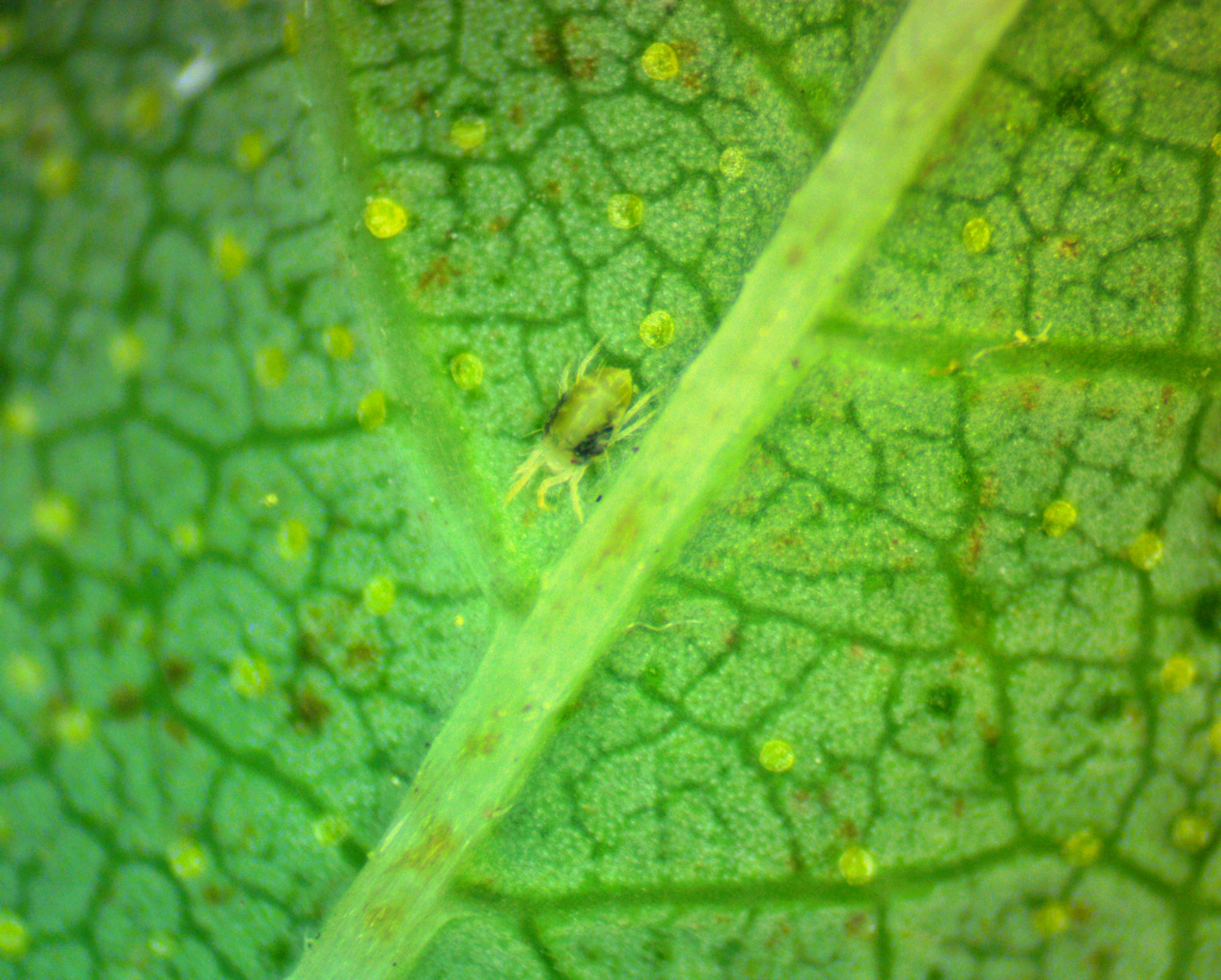
As growers are scouting, they are encouraged to remember that not all mites are bad. Consider documenting the levels of predacious mites in your orchard. If healthy populations of mite predators exist, they will continue to feed on plant parasitic eggs and nymphs and can be an effective component of your mite management program. Predaceous mites are smaller than adult ERM and TSSM, but they can be seen with a hand lens and typically move very quickly across leaf surfaces.
Mite control starts with monitoring early in the spring looking for the overwintering eggs (ERM) or adults (TSSM) and assessing the mite pressure. Ideally, growers will be using limited insecticides with miticidal activity in their season long programs as that protects their beneficial mite populations. If pest mite populations are high enough to require control, superior oil applications when the trees are dormant are an effective method of treatment. If issues with mites arrive during the growing season, refer to the 2022 Michigan Chestnut Management Guide for control options.
We are approaching the July window for lecanium scale crawler control. Lecanium scale activity may be noticeable at this time. Lecanium scale is a soft scale pest that attaches to and feeds on many deciduous plants in Michigan, most notably hardwood trees. Lecanium scale populations can build to extremely high levels over a series of favorable years before crashing due to natural enemies and disease. When present in low numbers, lecanium scale are often overlooked and are of little economic or aesthetic significance.
Growers need to check chestnut branches for evidence of this pest. Scales may look a lot like leaf scars or bud scales, so a close inspection is important. Some infestations have only a few scales per branch while others are well-covered. One tell-tale sign of scale activity is the shiny film of honeydew that the scales excrete onto surfaces beneath the scales. Increased ant activity is also associated with scale insects as they collect the honeydew.
The honeydew from scale can act as a substrate for sooty mold. On agricultural crops, sooty mold can become an issue when it ends up on the fruit or nut being produced. Additionally, the scales removes sap when feeding which can weaken shoots and even cause shoot death in some cases. The rule of thumb is that vigorous and healthy trees and plants can tolerate some scale infestation, but if high populations of Lecanium scale are found, control programs should be considered, particularly on small trees. Ideal control windows occur in early spring when buds are dormant and again in July when scale crawlers hatch. For more information on lecanium scale management, refer to the MSUE Article, Lecanium scale numbers building on chestnut.
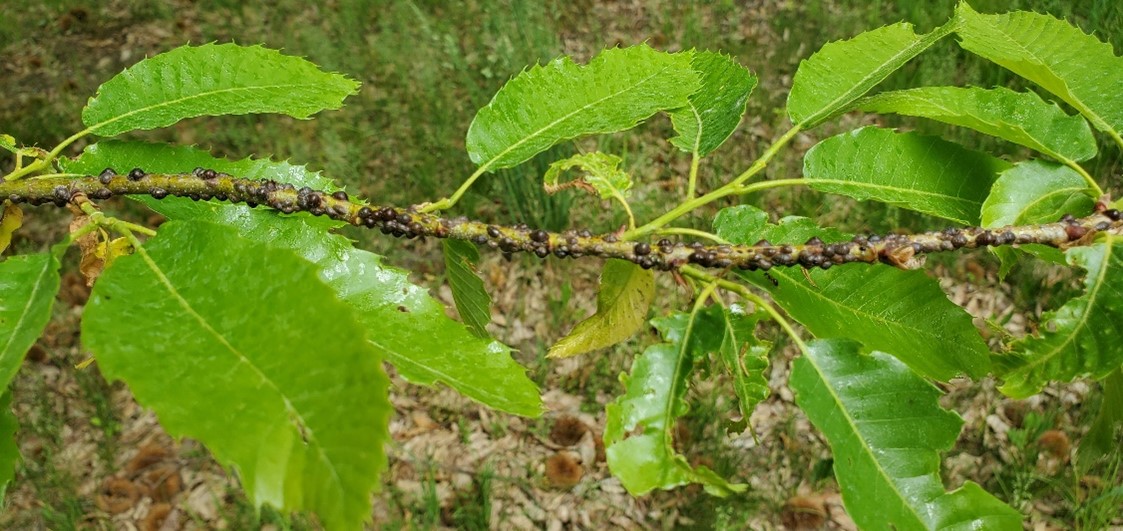
Potato leafhopper (PLH) pressure is building. Like many plants, chestnuts are sensitive to the saliva of PLH which is injected by the insect while feeding. Damage to leaf tissue can cause reduced photosynthesis which can impact production and quality, and damage the tree. Most injury occurs on new tissue on shoot terminals with PLH feeding near the edges of the leaves using piercing-sucking mouthparts. Symptoms of feeding appear as whitish dots arranged in triangular shapes near the edges. Heavily damaged leaves are cupped with brown and yellowed edges and eventually drop from the tree. Severely infested shoots produce small, bunched leaves with reduced photosynthetic capacity.
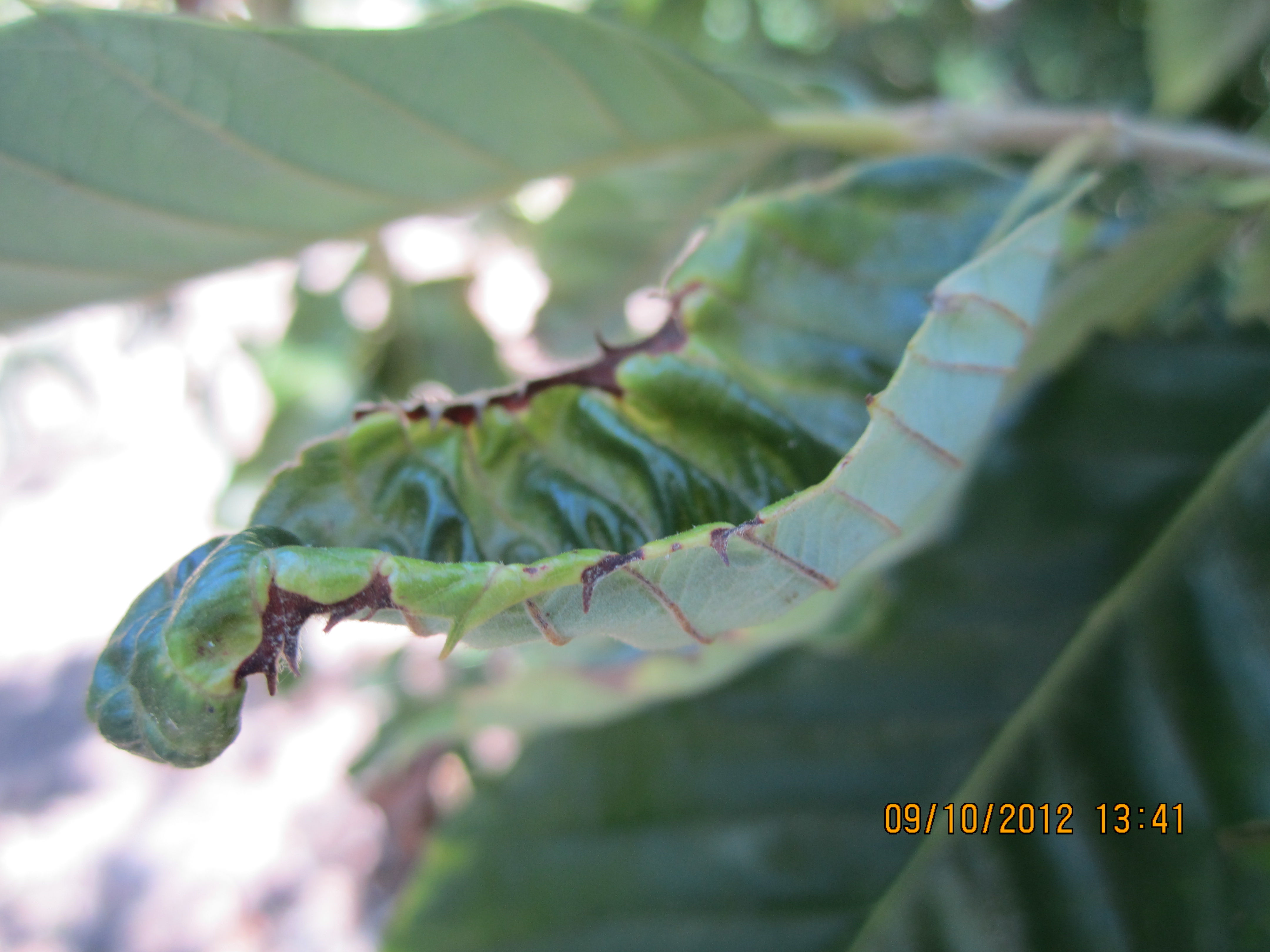
Adult leafhoppers are pale to bright green and about 1/8 inch long. Adults are easily noticeable, jumping, flying or running when agitated. The nymphs (immature leafhoppers) are pale green and have no wings but are very similar in form to the adults. PLH move in all directions when disturbed, unlike some leafhoppers which have a distinct pattern of movement. The potato leafhopper can’t survive Michigan’s winter and survives in the Gulf States until adults migrate north in the spring on storm systems.
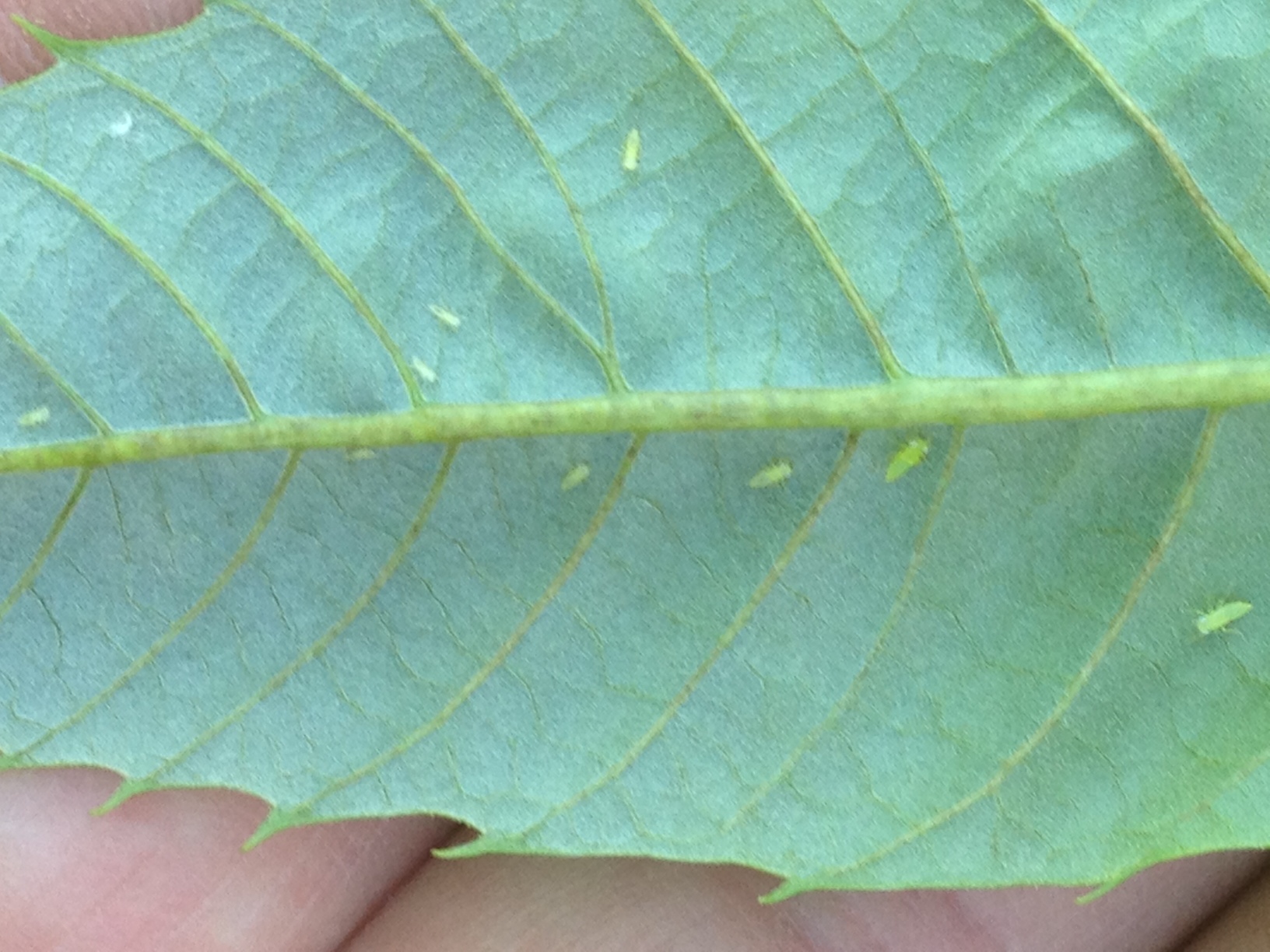
The easiest way to scout for PLH is by flipping the shoots or leaves over and looking for adults and nymphs on the underside of leaves. Pay special attention to succulent new leaves on the terminals of branches. For more information on insecticides available for the treatment of potato leafhopper refer to the 2022 Michigan Chestnut Management Guide.
Rose chafers (RC) adults are out and active throughout the major chestnut producing regions. RC are considered a generalist pest and affect many crops, particularly those found on or near sandy soils or grassy areas. The adult beetles feed heavily on foliage and blossom parts of numerous horticultural crops in Michigan and can cause significant damage to chestnut orchards. RC can be particularly damaging on young trees with limited leaf area. RC skeletonize the chestnut leaves but tend to consume larger pockets of tissue.
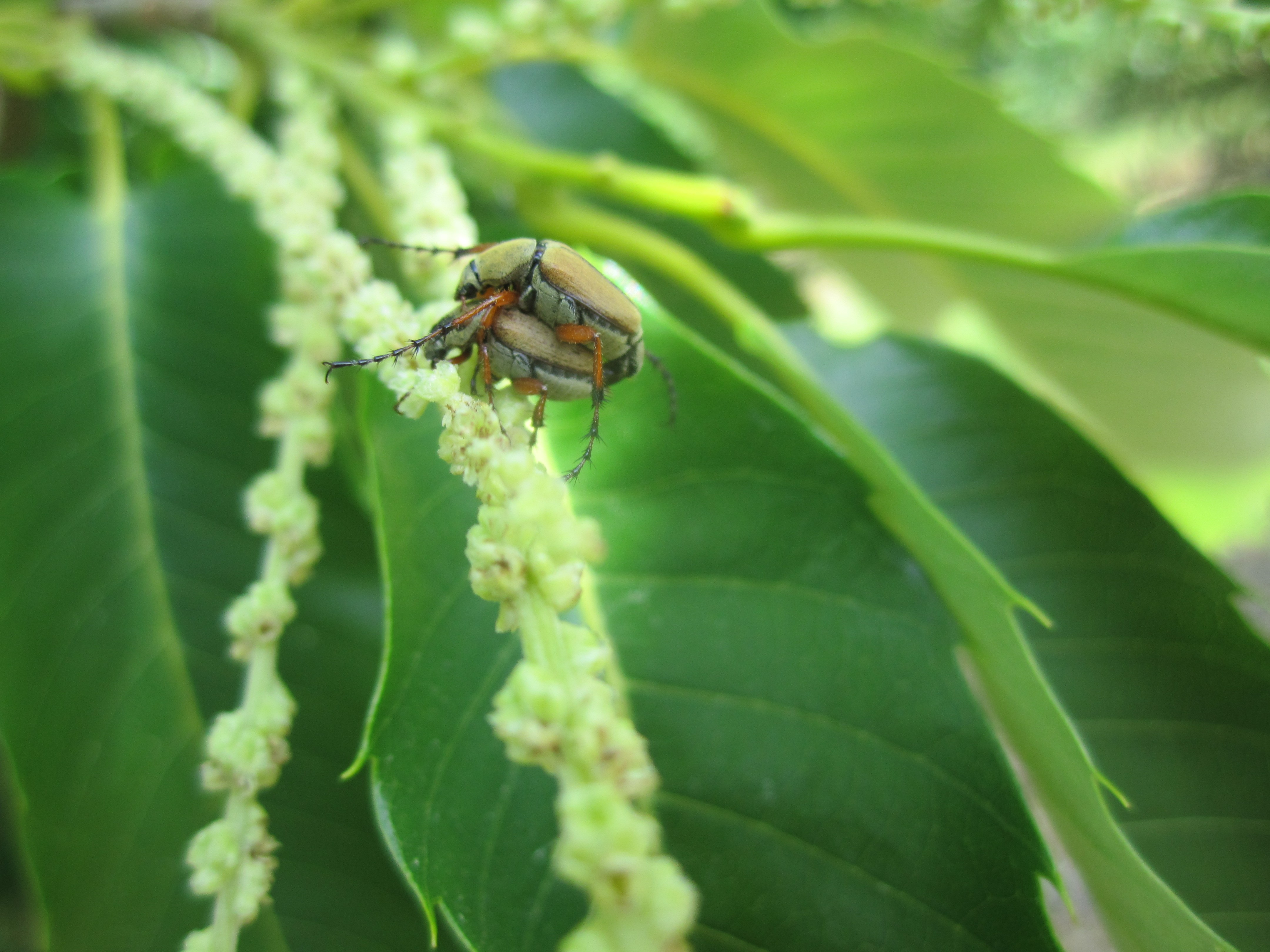
They are often found in mating pairs and fly during daylight hours. Visual observation while walking a transect is the best method for locating them. Because of their aggregating behavior, they tend to be found in larger groups and are typically relatively easy to spot. There are no established treatment thresholds or data on how much damage a healthy chestnut tree can sustain from rose chafer, but growers should consider that well-established and vigorous orchards will likely not require complete control. Younger orchards with limited leaf area will need to be managed more aggressively.
The rose chafer is a light tan beetle with a darker brown head and long legs and is about 12 mm long (Figure H). There is one generation per year. Adults emerge from the ground during late May or June and live for three to four weeks. Females lay groups of eggs just below the surface in grassy areas of sandy, well-drained soils. The larvae (grubs) spend the winter underground, move up in the soil to feed on grass roots and then pupate in the spring. A few weeks later, they emerge from the soil and disperse by flight. Male beetles are attracted to females and congregate on plants to mate and feed. For more information on insecticides available for the treatment of rose chafer refer to the 2022 Michigan Chestnut Management Guide.
Black stem borer adult activity should be winding down and growers are not reporting trap catches at this time. Black stem borer will infest and damage a wide variety of woody plant species, including chestnuts. Black stem borers are attracted to small trees with less than a 4-inch trunk diameter and stressed trees that produce ethanol. Female borers create tunnels in trunks to lay their eggs. These tunnels damage the tree’s ability to translocate water and nutrients.

Overwintering adults become active in late April or early May after one or two consecutive days of 68 degrees Fahrenheit or higher, often coinciding with blooming forsythia. Adult black stem borers are very small (0.08 inches long).
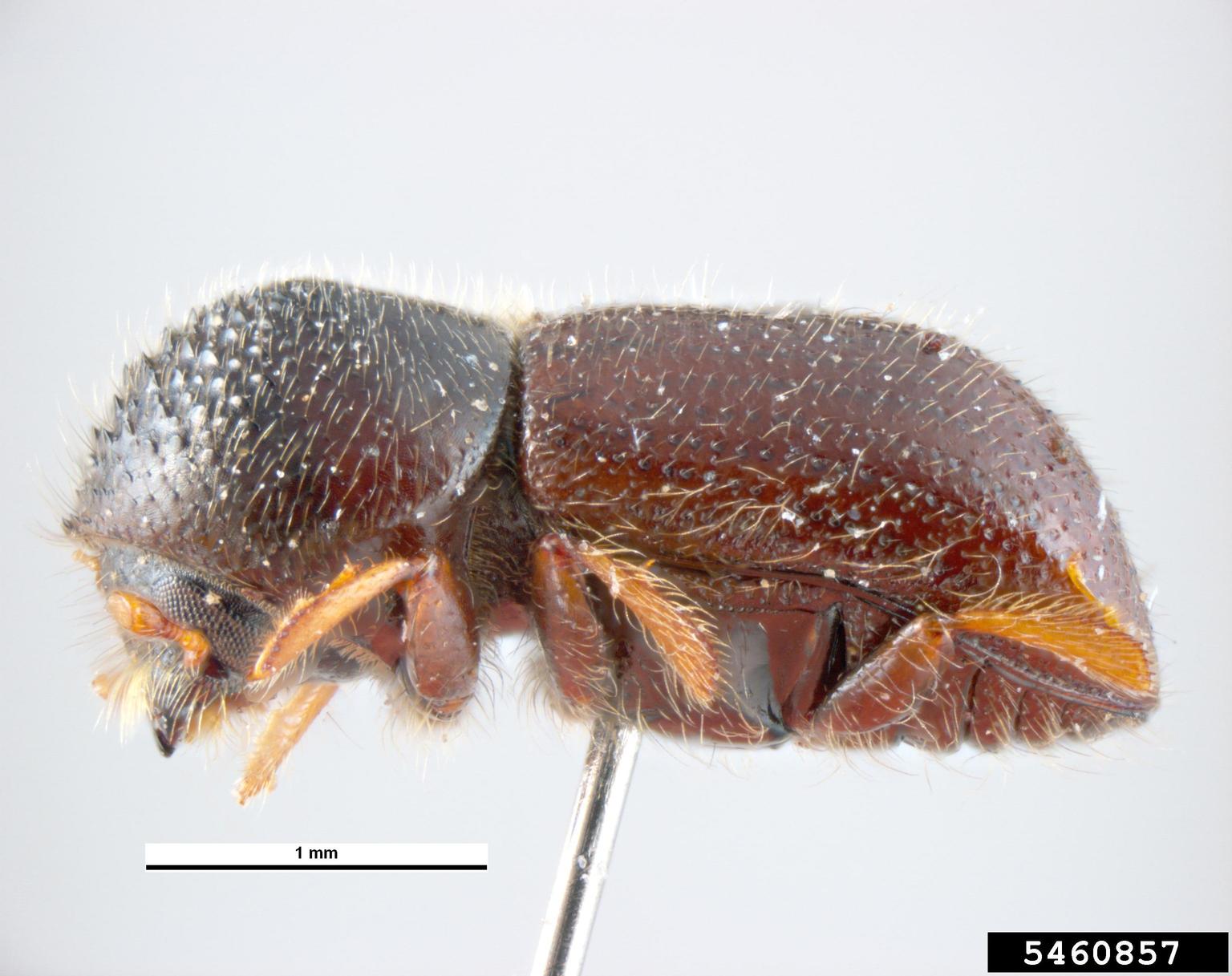
Growers are encouraged to use a simple ethanol baited trap to monitor for activity, starting in mid-April. Traps are most effectively deployed near adjacent wooded areas at a height of 1.6 feet. Hand sanitizer is an easy and accessible bait but should be refreshed every few days.
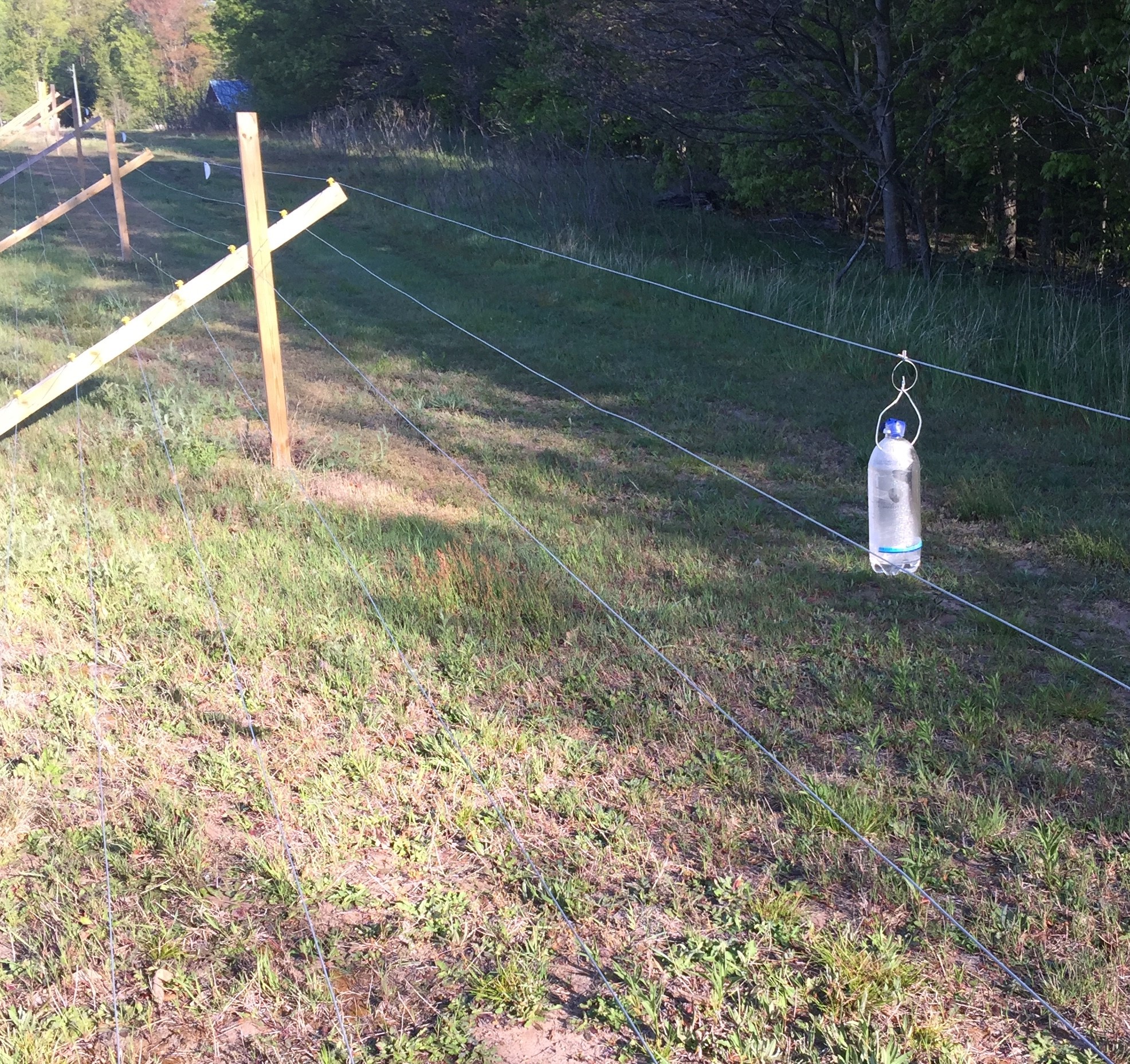
Growers with small, vulnerable trees and positive trap catches or a history of damage will need to apply a trunk spray to prevent damage. The time to spray an insecticide for this pest is when females are flying in the spring before colonizing new trees. Young trees near the perimeter of orchards, especially near woodlots, are at greatest risk of injury. Because they are so tiny, it is difficult to monitor for adults to determine the optimum time to apply an insecticide, but a trap as described above can help time applications.
Pyrethroid insecticides applied as trunk sprays have shown the most promise in reducing the number of new infestations within a season. For a list of registered pyrethroids for use in Michigan chestnuts, refer to the Michigan Chestnut Management Guide.
Later in the season, remove and burn dead or dying trees. It is also important to make sure all large prunings and brush piles are either burned or chipped and composted as they may harbor overwintering adults and contribute to future infestations. For more information on black stem borer, refer to the Michigan State University Extension bulletin, “Managing Black Stem Borer in Michigan Tree Fruits.”
Spongy moth (Lymantria dispar), formerly gypsy moth, caterpillars are being spotted around Michigan. In areas with previously heavy infestations, keep an eye out for this pest as it will feed on chestnut. In high enough numbers, they can completely defoliate trees, including chestnuts. Growers with vulnerable, young trees should be particularly vigilant in scouting for this pest. Small caterpillars are easily controlled with many insecticides, including Bt. Refer to the Michigan Chestnut Management Guide for more information on registered pesticides.
Disease
Existing chestnut blight infections (caused by Cryphonectria parasitica) can be observed at this time. There are no commercially available treatments for chestnut blight. Growers may prune out infected branches or cull whole trees as needed to limit disease pressure. Infested material should be burned or buried to further limit inoculum spread. To learn more about chestnut blight, visit the pest management section of the chestnut webpage.
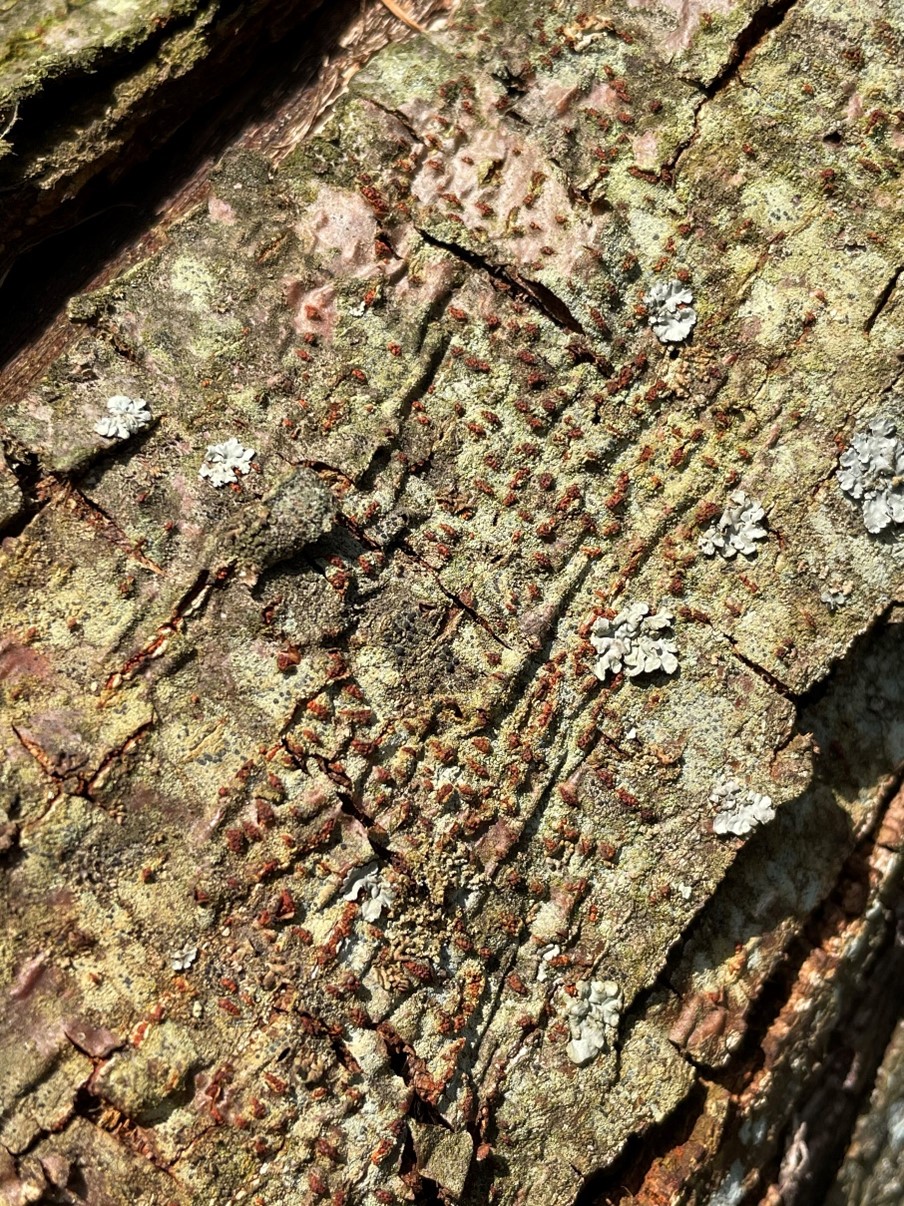
Stay connected
For more information on chestnut production, visit www.chestnuts.msu.edu and sign up to receive our newsletter.
Also, join us for the 2022 MSU Chestnut Growers Chat Series. This series of interactive Zoom meetings will allow easy communication between producers and MSU faculty. These informal weekly sessions will include crop and pest updates from Rob Sirrine and Erin Lizotte. In addition, MSU faculty will drop in to address timely issues and provide research project updates. Bring your field notes too! We want to hear what’s going on in your orchard. These Wednesday sessions begin May 11 and run every other week through Aug. 31, 2022, from 1:30-2:30 p.m. EST. Registration is free but required. Register today!
Become a licensed pesticide applicator
All growers utilizing pesticide can benefit from getting their license, even if not legally required. Understanding pesticides and the associated regulations can help growers protect themselves, others, and the environment. Michigan Pesticide Applicator Licenses are administered by the Michigan Department of Agriculture and Rural Development. You can read all about the process by visiting the Pesticide FAQ webpage. Michigan State University offers a number of resources to assist people pursuing their license, including an online study/continuing ed course and study manuals. For more information on becoming licensed, contact Lisa Graves at 517-284-5653.
This work is supported by the Crop Protection and Pest Management Program [grant no 2021-70006-35450] from the USDA National Institute of Food and Agriculture. Any opinions, findings, conclusions, or recommendations expressed in this publication are those of the author(s) and do not necessarily reflect the view of the U.S. Department of Agriculture.



 Print
Print Email
Email